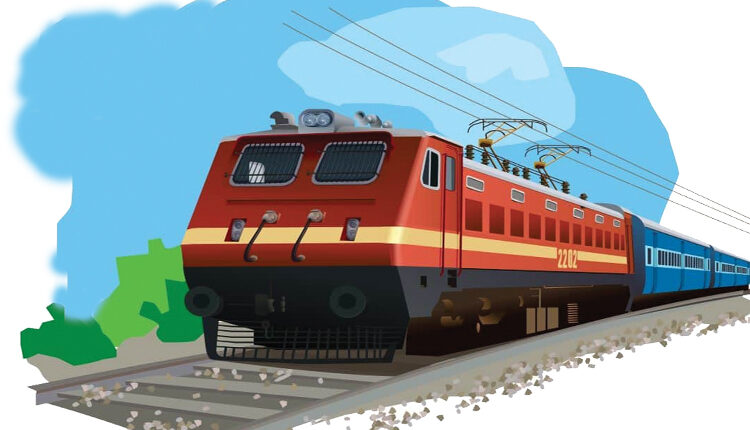Few institutions in India evoke the same sense of magnitude, reliability, and historical significance as the Indian Railways. Established in 1853 with a modest 34-kilometre run from Bombay to Thane, the Indian Railways has grown into one of the largest railway networks in the world. It stretches across over 68,000 kilometres, connecting remote villages to bustling metros, transporting over 23 million passengers and 3 million tonnes of freight every single day. As an intricate web of steel that binds India together, Indian Railways truly lives up to the title – The Lifeline of the Nation.
A Network Spanning the Nation
India’s vast geographical diversity—from the Himalayan foothills to coastal plains, from deserts to dense forests—poses unique transportation challenges. The Indian Railways, with its comprehensive coverage, plays a vital role in overcoming these. Whether it’s the toy trains chugging through the hills of Darjeeling or the Rajdhani zipping across states at high speed, the railway system ensures connectivity to regions otherwise hard to access.
The network is divided into 18 zones and over 70 divisions, with an efficient system of interlinking passenger and freight services. It caters to both daily commuters on suburban trains in cities like Mumbai and Kolkata, as well as long-distance travellers journeying from Kashmir to Kanyakumari. For many Indians, trains are not just a means of transport but a part of life—a place where stories unfold, cultures mingle, and memories are created.
Economic Engine on Tracks
Beyond transportation, Indian Railways is a significant driver of the Indian economy. As one of the world’s largest employers, with over 1.2 million people on its payroll, it provides direct and indirect employment to millions. Its freight services—carrying coal, cement, food grains, petroleum, and more—are indispensable to the industrial and agricultural sectors.
The Dedicated Freight Corridors (DFCs), currently under implementation, are poised to revolutionize goods transport by increasing capacity and reducing transit times. This will not only ease congestion on passenger routes but also significantly reduce logistics costs, giving a boost to India’s ‘Make in India’ initiative and other industrial ambitions.
Modernization and Technological Advancement
While Indian Railways is steeped in heritage, it is also actively embracing modernization. From the introduction of high-speed trains like the Vande Bharat Express to the implementation of automatic signalling and smart ticketing systems, the railway is evolving with the times.
Electrification of railway lines is being carried out at a rapid pace to reduce dependence on fossil fuels. As of 2024, over 85% of the broad-gauge network has been electrified, supporting the government’s commitment to sustainability and climate goals. Digitization efforts—from online ticket booking to real-time train tracking—have improved customer convenience and operational efficiency.
The railways is also exploring artificial intelligence, big data analytics, and IoT technologies to improve maintenance, predict failures, and ensure better safety for both passengers and goods.
Social Impact and Inclusivity
Indian Railways is more than steel tracks and locomotives; it is a powerful instrument for social inclusion. It connects rural and urban India, giving people access to education, jobs, healthcare, and opportunity. Affordable fares ensure that even the economically weaker sections can travel across the country.
Special categories of trains and coaches—for women, the elderly, and the differently-abled—show its commitment to inclusive growth. Initiatives like “One Station One Product” are also aimed at promoting local craftsmanship and rural entrepreneurship, allowing artisans to showcase and sell their products at railway stations.
Tourism on Rails
India’s cultural diversity and historical richness are best experienced through its rail journeys. Indian Railways offers several luxury trains like the Palace on Wheels, Maharajas’ Express, and Deccan Odyssey, which cater to tourists from around the world. These trains offer a royal experience while showcasing India’s heritage and scenic beauty.
The Bharat Gaurav trains, launched to promote domestic tourism, take pilgrims and travellers to religious and heritage destinations across the country. For backpackers and budget travellers, regular trains remain the preferred choice for exploring the many faces of India.
Green Tracks and Sustainable Future
As global attention turns toward sustainability, Indian Railways has been proactive in going green. It aims to become a net-zero carbon emitter by 2030. Solar and wind energy installations, bio-toilets in trains, use of recycled water, and elimination of single-use plastics at stations are all part of this vision.
The push for electrification and energy-efficient locomotives not only lowers emissions but also brings down operating costs. Green certifications for railway stations and coaches are gaining momentum, with several stations now fully powered by renewable energy.
Challenges on the Journey Ahead
Despite its many achievements, Indian Railways faces several challenges. Infrastructure bottlenecks, overcrowding, aging equipment, and maintenance issues remain areas of concern. While premium trains and new corridors grab headlines, many routes still need upgrades in track quality, station amenities, and passenger safety.
The transition to private participation and PPP (public-private partnership) models, while offering potential benefits, also needs to be handled with care to maintain affordability and inclusivity. Ensuring that modernization does not come at the cost of accessibility is key to preserving the railway’s ethos as a people’s transport.
Railways During Crisis – A Symbol of Resilience
Indian Railways has demonstrated remarkable resilience during crises. During the COVID-19 pandemic, when most transport systems were halted, Indian Railways ran thousands of Shramik Special trains to transport stranded migrant workers back to their home states. It also converted coaches into isolation wards and deployed them to regions in need.
Whether during natural calamities or national emergencies, the railway has consistently stepped up, reinforcing its identity as the backbone of India’s logistical response mechanism.
Conclusion
Indian Railways is not merely a transportation utility; it is a reflection of India’s unity in diversity, its aspirations, and its unstoppable spirit. It touches the lives of millions daily, supports the economy, empowers the common man, and holds a mirror to the country’s progress. As it strides ahead with digitalization, sustainability, and capacity-building efforts, Indian Railways is poised to remain the lifeline of the nation—steadfast, inclusive, and transformative.




